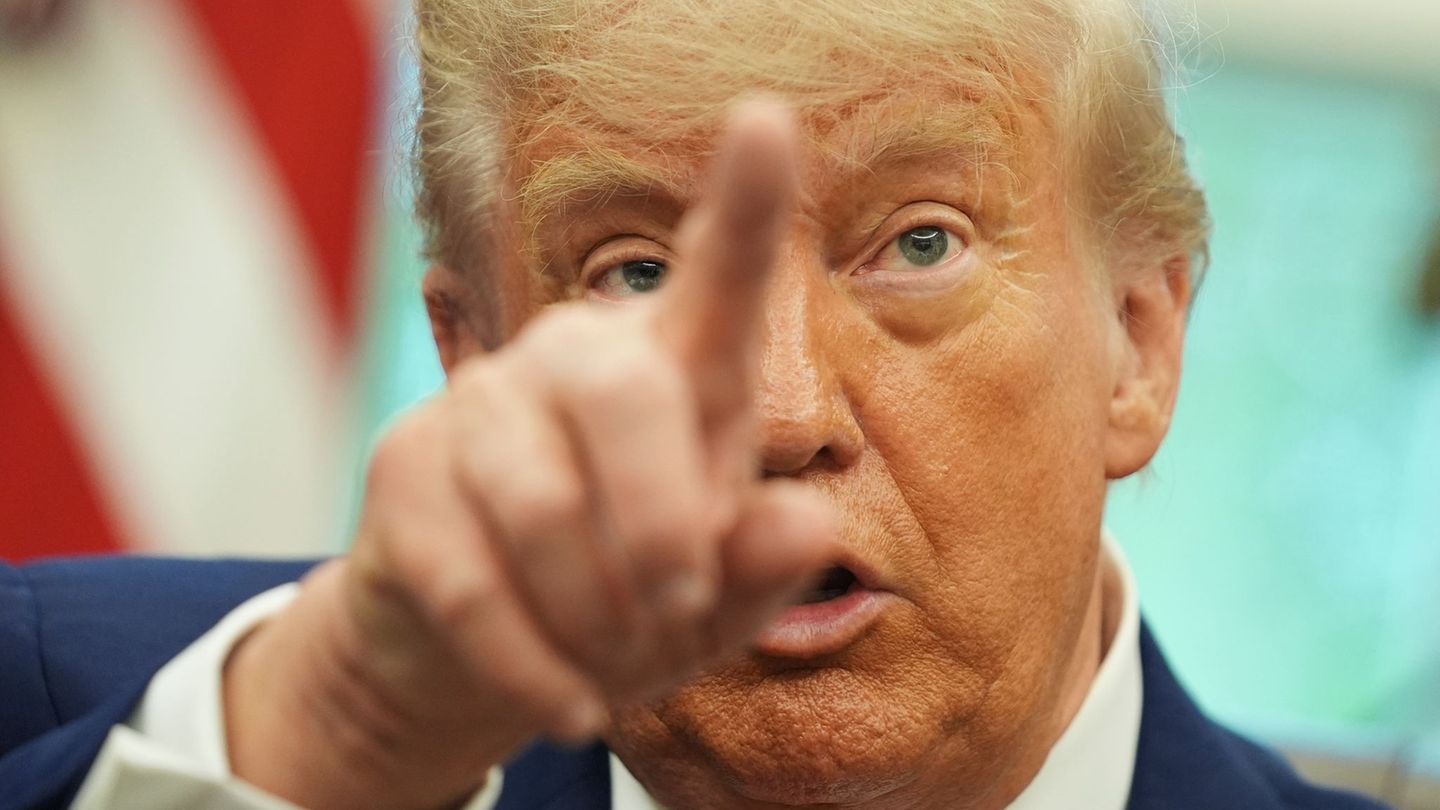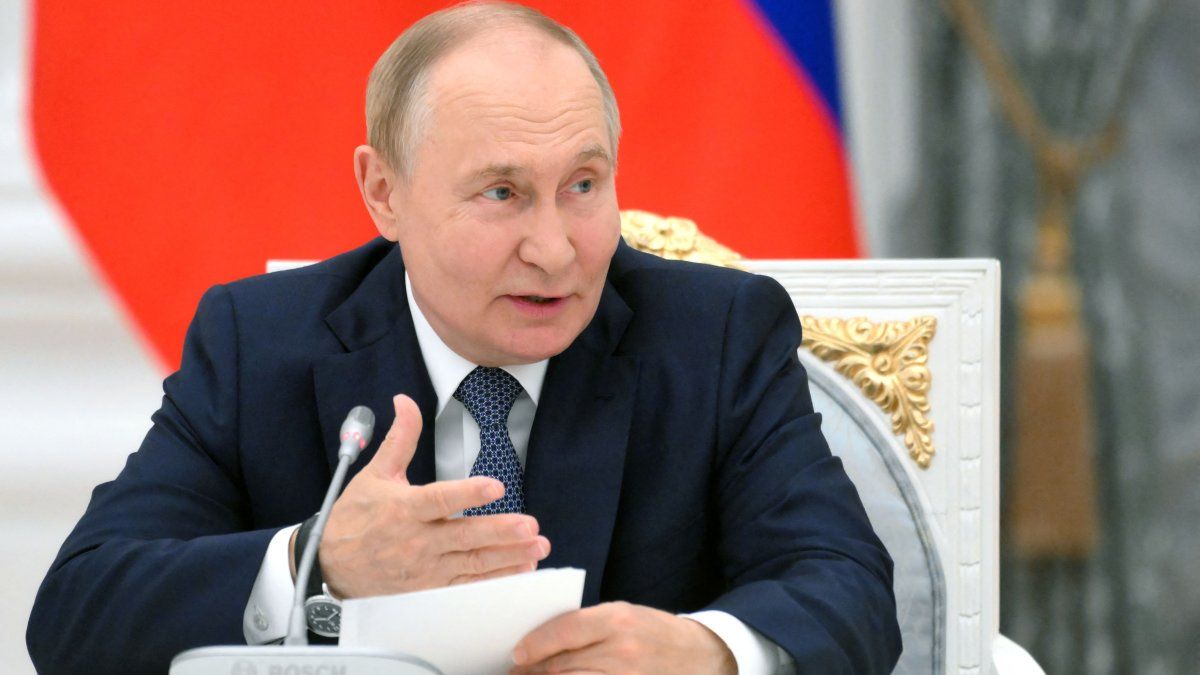Trade dispute
Escalation instead of agreement: Trump sends customs letter to EU
Copy the current link
Add to the memorial list
Until the end, there was hope in the EU that the customs dispute could end lightly with the USA. A new letter from US President Trump arouses considerable doubts. Or is he just a bluff?
US President Donald Trump is fully on the course of confrontation in the customs dispute with the EU. Regardless of the talks about a mutually acceptable solution, he announced new tariffs in a letter published on Saturday from August 1st and warns the EU to take countermeasures. Everything just a negotiation tactic? Questions and answers at a glance:
What exactly is in the letter?
The letter to EU Commission President Ursula von der Leyen starts very nice. The first sentence states: “It is a great honor to give you this letter because it underlines the strength and commitment of our trade relationships (…).” Shortly afterwards, however, the EU is sticking:
Trump announces that the United States will raise a base tariff of 30 percent on imports from the EU – separately from the sectorums that are already applying to the import of cars and car parts as well as steel and aluminum products. He also lets know that he expects US companies to be able to import goods into the EU in the future. There is also a threat to this: If the EU reference tariffs charge, its duty rate will be opened to the announced 30 percent, he warns.
What would an implementation of the announcements mean?
This would be a violent blow, especially for the export -oriented German economy, since tariff products usually make products more expensive and thus slow down the trade. The economy already suffered from the tariffs already introduced by Trump. This included a basic customs set of ten percent, tariffs on import of cars and auto parts of 25 percent and tariffs on steel and aluminum products of 50 percent.
The President of the Autoile Association VDA, Hildegard Müller, commented on Saturday: “The costs for our companies are already in the billion dollar sector-and every day the sum grows.”
How does Trump justify his new announcements?
Trump describes the tariffs in the letter as a necessary corrective measure. In his view, European tariffs and other commercial barriers have caused a large and non-portable US trade deficit over the years. This deficit represents a significant threat to the economy and the national security of the United States.
Are the negotiations with the letter ended for the time being?
That is completely unclear. Optimists in Brussels hope that Trump only wants to build a threatening setting with the letter in order to be able to get out more in the end when the negotiations continued. It is also considered possible that he wants to delay a deal for as long as possible in order to be able to pay for a cash register that has already been introduced. In this way, the EU assumes that Trump needs customs income in order to redeem tax reduction. US Finance Minister Scott Bessent recently calculated that he would like to take more than $ 300 billion with import duties by the end of the year. In addition to the EU, almost all other United States trading partners worldwide are affected.
Is Trump recognized in the letter?
Yes. If the EU is ready to open its previously closed trading markets for the United States and to eliminate it, Trump writes that the letter will be adapted. Depending on the development of relationships, the tariffs could be adapted up or down.
Where were negotiations with the USA last?
The draft for a joint explanation was on the table. Most EU countries were fundamentally ready to accept a new US base customs set. However, this should be ten percent or below and not 30 percent. In addition, it was ready to be secured to work on a reduction in the trade deficit – for example by the increased import of liquid gas (LNG) from the USA. However, the EU also made it clear that Trump’s rules for the digital economy would not change it.
How does the EU react to the letter?
The EU Commission, which is responsible for the customs negotiations with the USA, immediately made it clear that it wants to continue to strive for a mutually acceptable solution to the trade conflict as long as possible. The commission president of the Leyen said that the letter from US President Donald Trump is noted for a new dial and a new schedule. It was still ready to work on an agreement by August 1st.
What options would the EU have?
In theory, it could be started immediately to put the USA under pressure with the first retaliation tariffs. These have already been decided, but have been suspended due to previously ongoing negotiations. It is likely that they will only be put into force if there is no chance of a negotiating solution – or when the United States does its new customs plans. Economically, EU tariffs could damage the United States significantly – the EU is a real market power with around 450 million citizens in 27 countries.
Then why doesn’t the EU just put pressure on pressure?
The background in defense issues is particularly the background. So there is concern that Trump can build new threats in the event of a stricter trade conflict – for example by once again questioning the military assistant duty within NATO or supporting support for Ukraine – both are extremely sensitive issues given the threats of Russia.
What kind of trading volume is it actually about?
According to the EU, the European Union and the United States have the most comprehensive bilateral trade and investment relationships in the world and the closest economies that interlock together. Together they make up almost 30 percent of the world’s trade in goods and services and 43 percent of global economic output. In 2024, transatlantic trade in goods and services was around 1.7 trillion euros according to EU numbers. The EU and the USA were the most important goods trading partner for each other.
Do the US really have a clear trade deficit?
According to the latest figures from the Eurostat statistics office, the EU posted a significant surplus of around 198 billion euros in goods trading with the USA in 2024. In 2024, for example, around 533 billion euros were carried out to the United States and only imported goods worth around 335 billion euros from the USA. In the service sector, on the other hand, the EU has a trade deficit with the United States, so that according to its own statements, the EU has a trade surplus of 50 billion euros in 2024. “This corresponded to less than three percent of the total trade between the EU and the United States,” is argued in Brussels.
dpa
Source: Stern




